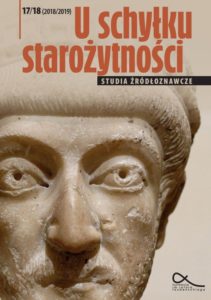Berytus and the aftermath of the 551 earthquake
Berytus and the aftermath of the 551 earthquake
Author(s): Lee MordechaiSubject(s): Ancient World
Published by: Wydawnictwo Naukowe Sub Lupa
Keywords: late antiquity; earthquakes; environmental history; Beirut; Syria; Phoenicia; 551 earthquake; Byzantine History; Eastern Mediterranean
Summary/Abstract: Late antique Berytus (modern Beirut) experienced a major earthquake in 551 ce. Thesocial and demographic effects of this earthquake, however, remain unclear. This paper first situates Berytus in its late antique environmental, social and cultural context.It then examines the earthquake and its effects using interdisciplinary tools that include texts, archaeological finds and scientific studies. It investigates the city’s main cultural symbols – its law school and its silk industry, whose disappearance from the sources roughly coincides with the earthquake. The paper further analyzes changes in material culture in the form of coins, pottery sherds and glass as proxies for economic activity and demography in the city. Using this disparate source base,it concludes that the main effect of the 551 earthquake was a reconfiguration of existing practices and institutions. While more vulnerable ones declined or collapsed,more robust ones recovered quickly. At the same time, the earthquake also triggered a wave of economic and perhaps also cultural experimentation.
Journal: U schyłku starożytności - Studia źródłoznawcze
- Issue Year: 2019
- Issue No: XVII-XVIII
- Page Range: 197-241
- Page Count: 45
- Language: English

